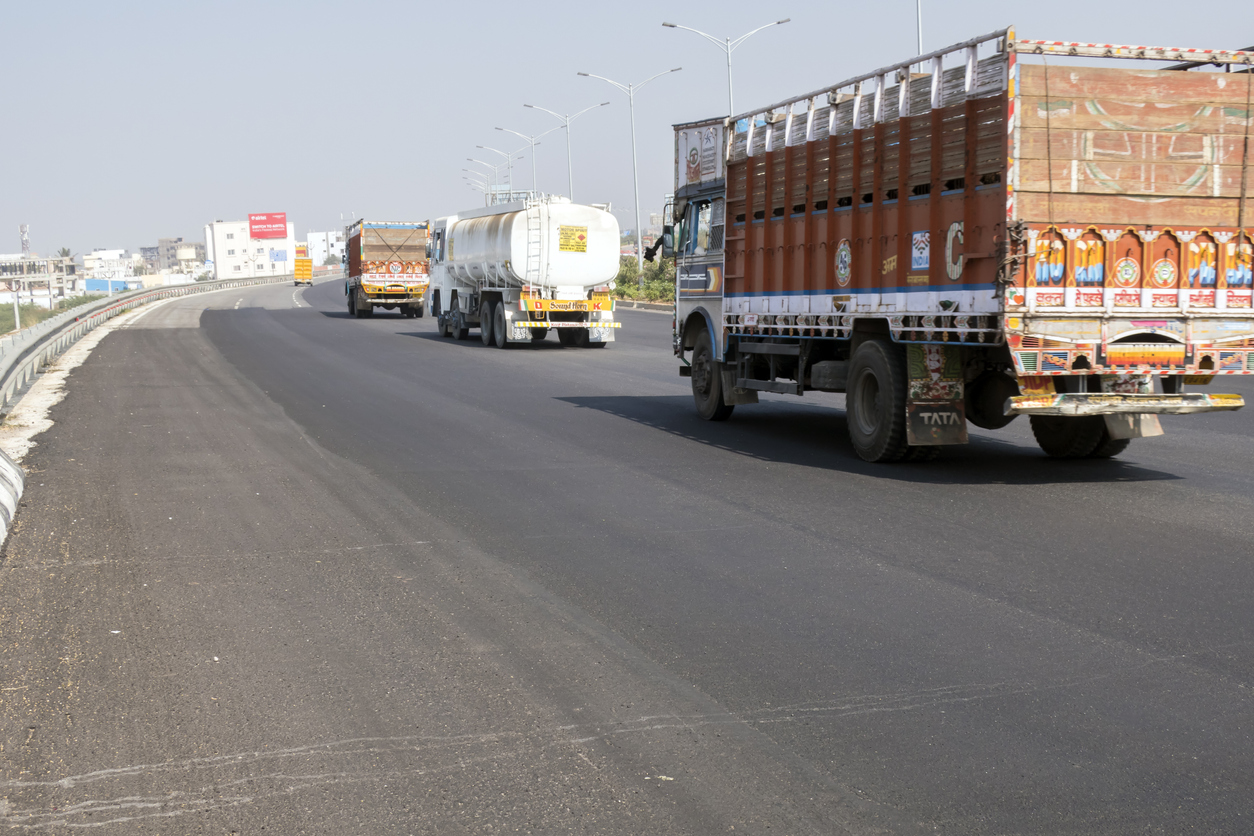
Truckers feel the pinch of diesel price hike, jack up freight rates
The operating cost for India’s truckers has risen by nearly 40% over the last few months as the continuous increase in diesel prices has wreaked havoc. For some time, the truckers absorbed this cost pressure due to long-term contracts with customers, but now, they have begun raising freight rates.

The operating cost for India’s truckers has risen by nearly 40% over the last few months as the continuous increase in diesel prices has wreaked havoc. For some time, the truckers absorbed this cost pressure due to long-term contracts with customers, but now, they have begun raising freight rates.
The quantum of the increase varies – truckers in Chennai say freight rates have gone up by as much as 20% whereas truck aggregators say the increase has been much more modest at just about 4-6%, since March 1.
On trunk routes (most sought after), the increase has been up to 10% in February, according to the Indian Foundation of Transport Research & Training (IFTRT). But there is no doubt that the rising pump prices of diesel are putting enormous pressure on the truck transporters, who have already suffered due to the COVID lockdown, which brought all their operations to a halt for months last year. Of course, higher freight rates are also contributing to all-round inflation and prices of cooking oil, some key vegetables and daily-use FMCG products have begun inching up.
Also read: Post-COVID economic recovery may be at the cost of public health, environment
For transporters, the only saving grace is the substantial jump in demand for road carriage from most sectors – automobiles, food grain, FMCG and consumer durables – as the economy has revived. Robust demand has created a situation where demand gaps have begun emerging now – sometimes, there are not enough trucks available – and this has given truckers the confidence to raise rates.
K K Sasidharan, President of the Chennai Goods Transport Association, says that while cost of operations has risen 40%, freight rates charged by the truckers in Chennai are up by just 20% or half the quantum of the cost push. “This means fleet operators are making do somehow. For 8-9 months during the pandemic and the subsequent lockdown, fleet operators had been is deep trouble since business was non-existent and they were unable to even pay EMIs….now, this relentless fuel price increase has come,” he said.
Also read: India drags its feet in the face of climate catastrophe
The prices of diesel – the fuel of choice for truckers and for transporting rail freight – have risen in 16 instalments in February alone, going up by more than Rs 4 per litre. Since October last year, the price increase in diesel has been about Rs 11 per litre.
Sachin Haritash, the CEO of truck aggregator Mavyn, says that fleet owners have passed on only 4-6% increase to customers, after holding on to rates in February due to previous long-term contracts. The hikes have been implemented since the beginning of March, but if a customer has an ad-hoc requirement of trucks, rates are higher by 10-12%.
“Two things are happening: Costs are rising due to fuel price increase while simultaneously demand is also up due to record foodgrain production coupled with increased shipments of consumer durables, FMCG products, automobiles. Fleet owners have increased rates in March, but we expect rates to be increased again, a second time, in the second quarter of FY22. The fleet owners will hold rates in Q1 but after that, the rates could go up by an unprecedented 12-15%.”
In any case, fuel price increase is not the only thing riling truckers. The increasingly aggressive push to increase freight loading and freight revenue from the Indian Railways (IR) could also make their life difficult going forward. Ever since the pandemic put a stop to passenger operations, the Indian Railways has undertaken a number of initiatives to enhance its modal share of freight and revenue from freight. These include hefty discounts on certain product categories, launching dedicated parcel trains etc.
Sasidharan shrugs off the impact IR’s renewed freight focus could have on the truckers, saying the railways is mainly targeting the industrial segment and even though its rates are now on par with road freight rates, some inherent disadvantages remain. “If an automobile customer sends his consignment by rail, actual transportation takes 5 days (same time taken by road) but another 2-3 days are lost in loading/unloading etc. Time taken by transporting goods by road is much lesser. Those in the automobile industry who had shifted to trains are now back to truckers.”
This, however, may not be true for every product category. Haritash gives the example of Maruti Suzuki India, the country’s largest car maker. Nearly every second passenger vehicle sold in the Indian market is a Maruti vehicle. The company was transporting 7-8% of its vehicles by Railways till 2019-20, but last fiscal, nearly 17% of its vehicles were sent by rail. “This will be increased to 30% now. This means a loss of about 3,000 trucks for the road transport industry,” he says. But here’s the catch: rail transport is attractive only for large, high-value consignments. Haritash says FMCG customers do not prefer the railways due to multiple handling and product sensitivity issues.
All in all, as of now, the rail and road transport sectors can co-exist peacefully though the avowed goal of the Indian Railways is to significantly increase its modal share of freight in the coming years. In any case, the the national carrier’s freight earnings have also been impacted because of steep discounts amid rising fuel prices. As per data from the Railways itself, while total freight tonnage was up by nearly 5.5% in February this year, against the same month in 2020, earnings were up by just 3.66%. For the April-February period, freight tonnage was nearly flat at -0.42% while revenue was down by more than 6%.


